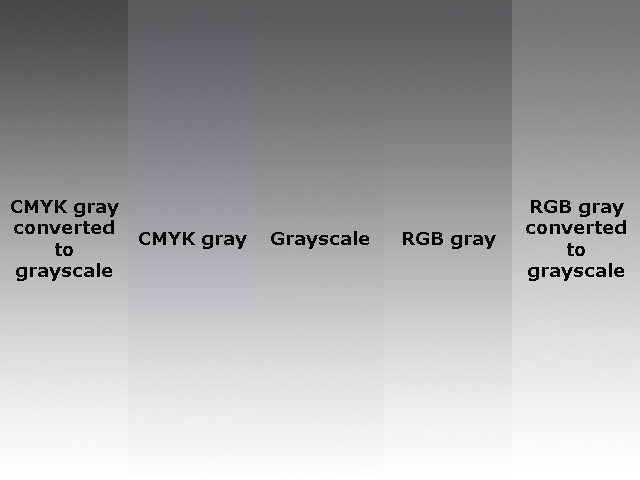With just about any project, printing included, one of the chief concerns is cost. Unlike traditional offset printing, CEC’s digital printing allows us to print in full color for the same cost as printing 1, 2 or 3 color. The main cost difference with CEC is printing in color versus black-and-white. Our color press can distinguish full color pages from black-ink-only pages so we can bill our client accordingly. Also, we have dedicated black-and-white presses which will print any file in shades of gray, even if the file submitted is in full color.
Pretty simple, right?
Well, not always.
Digital Printing On A Black Only Press
Frequently, we receive files that were designed in full color, but due to budget constraints our client decides they want it printed in black-and-white. Generally this is fine, but there are a number of issues to consider. First, some colors will be very similar when printed in shades of gray. For example, when the image below is viewed in its original, full color state, it is easy to see 3 separate colors – red, green and gray. However, when this image is automatically converted to grayscale or printed on some monochrome printers, it becomes very difficult to distinguish any of the grays apart, making the text illegible.
 |
 |
| Original, Full Color Image (RGB) | Same Image, Converted To Grayscale |
| Click the above images to open a larger version in a new tab/window. | |
Another potential problem with this relates to color space consistency. With larger companies there may be multiple departments working on portions of a book that will be combined and printed as a single file. In these cases, we often run into files being created in a mix of grayscale, RGB and CMYK. While they can all be converted to grayscale, this conversion usually will not create a consistent look. Often, an RGB gray converted to grayscale can be lighter than the same gray created in grayscale. Conversely, CMYK grays (even when using a percentage of just K (black) to create the gray) will often create a darker result than the same gray created in grayscale color space. The image below shows the variation in color using the examples explained above (may or may not be drastic on screen depending on your monitor).

Comparison of gray-to-white gradients created in different color spaces.
Click the above image to open a larger version in a new tab/window.
Printing On A Full Color Digital Press
The above problems occur when printing a color file in a black-only press. What about printing a single file on our digital color press with some pages printing in color and others in black and white. This is another way to stay in budget on a project but not lose all of the “pop” that a color document can offer. Our digital color press does allow for this, but the file must be set up correctly. In this case, RGB grays will not work without first being converted to grayscale in the file (which requires editing charges). CMYK grays are fine, as long as they are built using only percentages of K (with CMY all being 0). As with the above examples though, consistency is key in assuring that everything comes out looking the same. In jobs printed on a digital color press though, it is doubly important because your price will increase if a page that should have been black-only ended up using more than just black toner.
Hopefully this article clears up a common misunderstanding regarding printing in black-ink only. As always, if you have any specific questions about an upcoming project, please contact one of our client service representatives.





